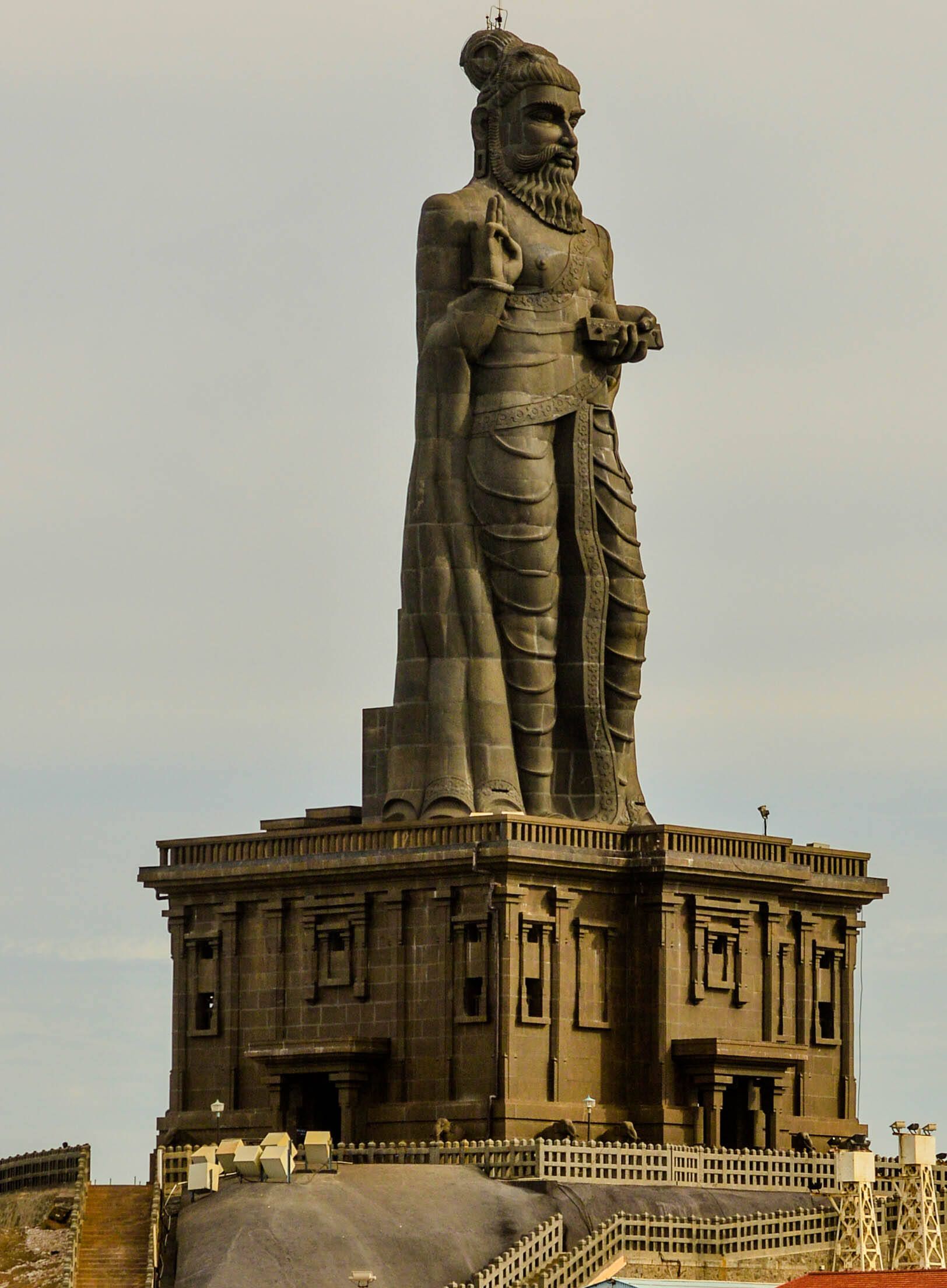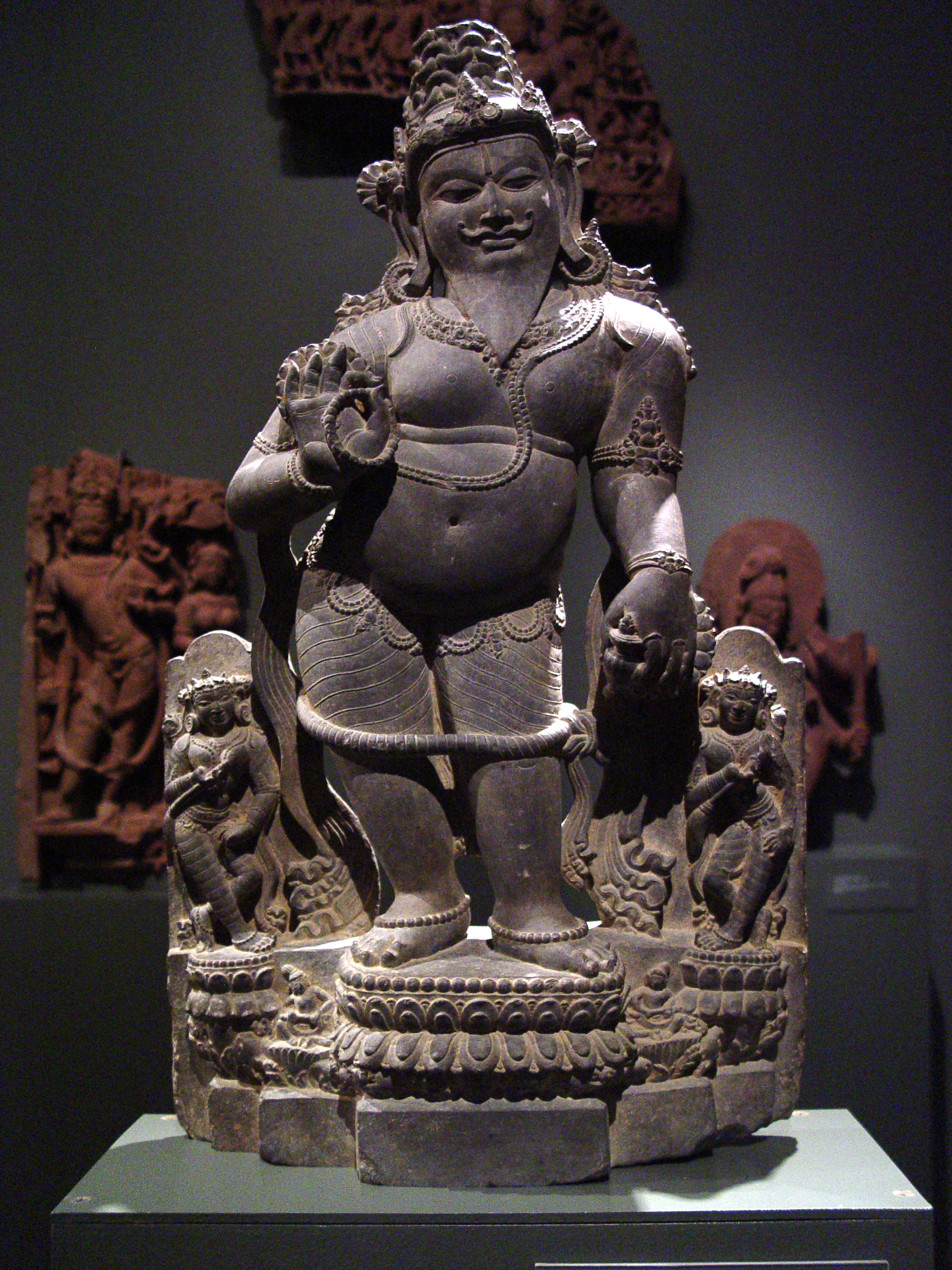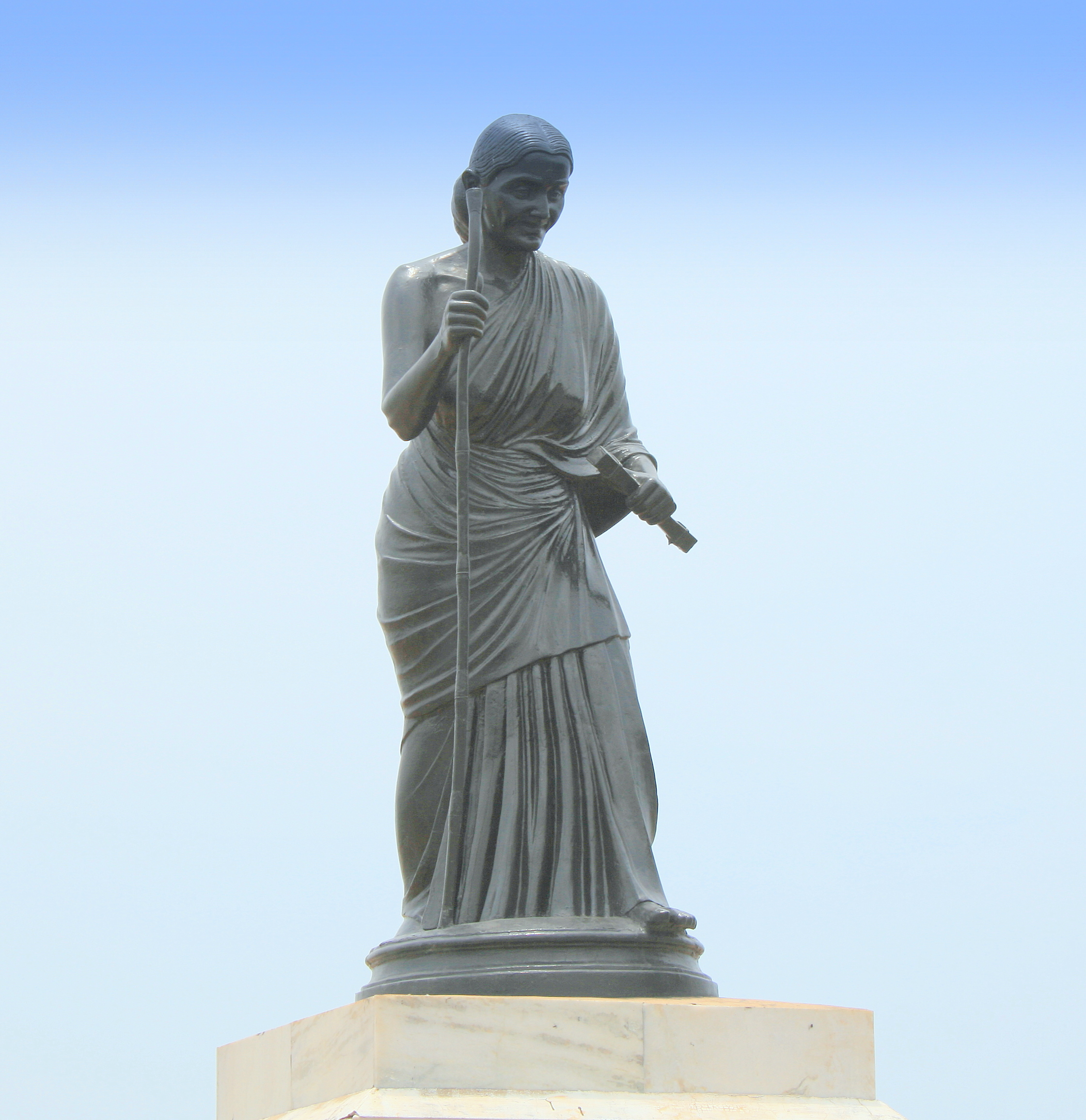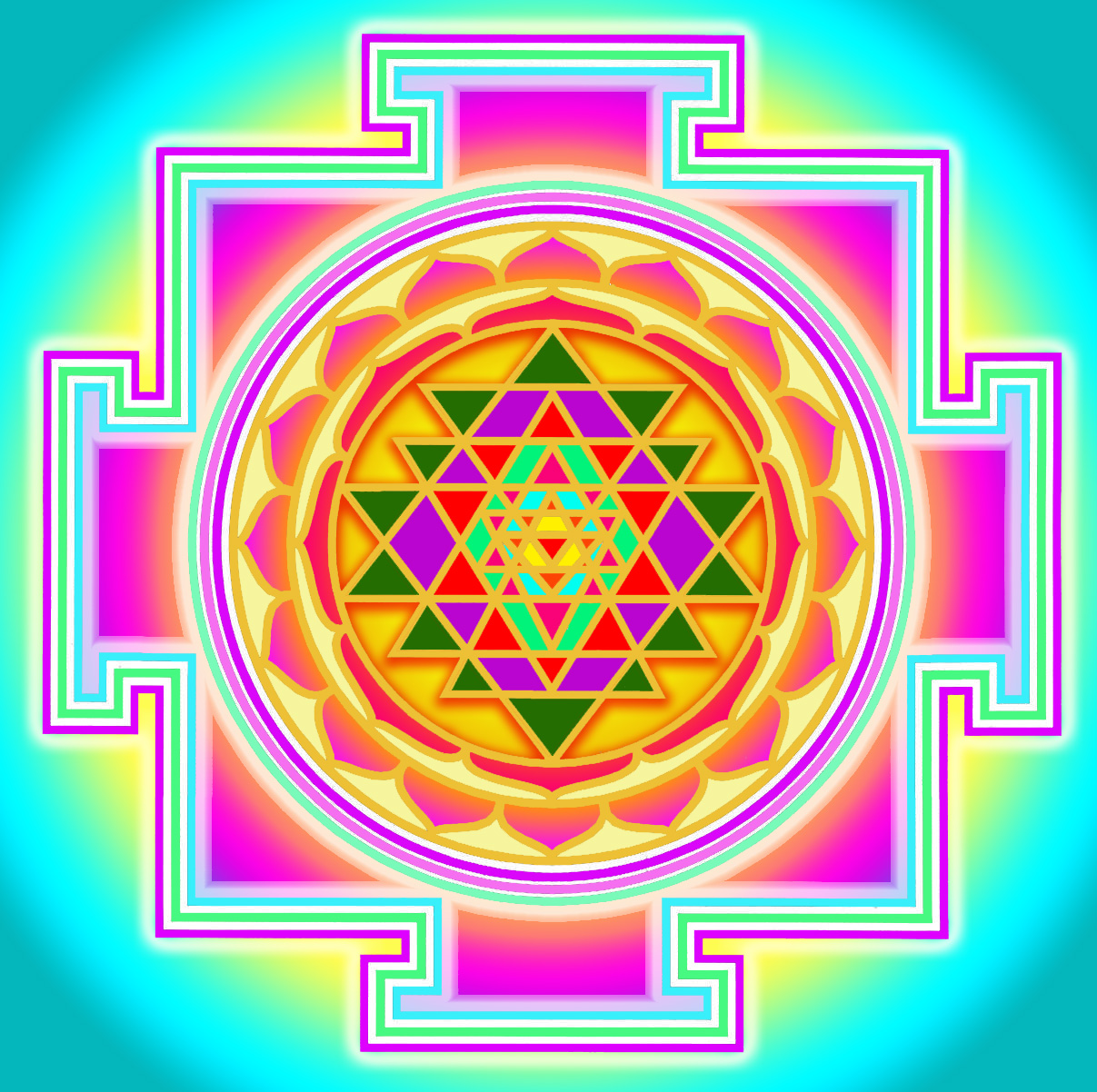|
Vasuki (wife Of Valluvar)
Vasuki ( ta, வாசுகி) was a Tamil woman who lived around the late or post Sangam era (between 1st century BCE and 5th century CE). She was the wife of the Tamil poet-philosopher Valluvar. She is traditionally considered a faithful wife and a model of Tamil womanhood. Biography Very little is known about the life of Vasuki other than her being the wife of Valluvar. According to Maraimalai Adigal, Vasuki was also known as Nagi. She was one of the daughters of Margaseyan (or Margasahayan), a farmer who lived near Kaviripakkam, and his wife Ambujam. It is said that when Margasahayan's crops contracted disease, Valluvar helped with curing them. As a token of gratitude, Margasahayan offered Valluvar his daughter in marriage. Legend has it that Valluvar asked Vasuki to cook a handful of sand in order to test her before taking her in marriage, and Vasuki miraculously turned it to boiled rice and served him a scrumptious meal. She is widely known as a chaste and pious woman a ... [...More Info...] [...Related Items...] OR: [Wikipedia] [Google] [Baidu] |
Thiruvalluvar 123
Thiruvalluvar (Tamil: திருவள்ளுவர்), commonly known as Valluvar, was a celebrated Tamil poet and philosopher. He is best known as the author of the ''Tirukkuṟaḷ'', a collection of couplets on ethics, political and economical matters, and love. The text is considered an exceptional and widely cherished work of Tamil literature. Almost no authentic information is available about Valluvar, states Kamil Zvelebil – a scholar of Tamil literature. His life and likely background are variously inferred from his literary works by different biographers. There are unauthentic hagiographic and legendary accounts of Valluvar's life, and all major Indian religions, as well as Christian missionaries of the 19th century, have tried to claim him as secretly inspired (''crypto-'') or originally belonging to their tradition. Little is known with certainty about his family background, religious affiliation, or birthplace. He is believed to have lived at least in the t ... [...More Info...] [...Related Items...] OR: [Wikipedia] [Google] [Baidu] |
Chennai
Chennai (, ), formerly known as Madras ( the official name until 1996), is the capital city of Tamil Nadu, the southernmost Indian state. The largest city of the state in area and population, Chennai is located on the Coromandel Coast of the Bay of Bengal. According to the 2011 Indian census, Chennai is the sixth-most populous city in the country and forms the fourth-most populous urban agglomeration. The Greater Chennai Corporation is the civic body responsible for the city; it is the oldest city corporation of India, established in 1688—the second oldest in the world after London. The city of Chennai is coterminous with Chennai district, which together with the adjoining suburbs constitutes the Chennai Metropolitan Area, the 36th-largest urban area in the world by population and one of the largest metropolitan economies of India. The traditional and de facto gateway of South India, Chennai is among the most-visited Indian cities by foreign tourists. It was ranked the ... [...More Info...] [...Related Items...] OR: [Wikipedia] [Google] [Baidu] |
Ancient Tamil Nadu
Ancient history is a time period from the beginning of writing and recorded human history to as far as late antiquity. The span of recorded history is roughly 5,000 years, beginning with the Sumerian cuneiform script. Ancient history covers all continents inhabited by humans in the period 3000 BCAD 500. The three-age system periodizes ancient history into the Stone Age, the Bronze Age, and the Iron Age, with recorded history generally considered to begin with the Bronze Age. The start and end of the three ages varies between world regions. In many regions the Bronze Age is generally considered to begin a few centuries prior to 3000 BC, while the end of the Iron Age varies from the early first millennium BC in some regions to the late first millennium AD in others. During the time period of ancient history, the world population was already exponentially increasing due to the Neolithic Revolution, which was in full progress. While in 10,000 BC, the world population stood ... [...More Info...] [...Related Items...] OR: [Wikipedia] [Google] [Baidu] |
Tirukkural
The ''Tirukkuṟaḷ'' ( ta, திருக்குறள், lit=sacred verses), or shortly the ''Kural'' ( ta, குறள்), is a classic Tamil language text consisting of 1,330 short couplets, or Kural (poetic form), kurals, of seven words each. The text is divided into three books with aphoristic teachings on virtue (''aram''), wealth (''porul'') and love (''inbam''), respectively. Considered one of the greatest works ever written on ethics and morality, it is known for its universality and secularity, secular nature. Its authorship is traditionally attributed to Thiruvalluvar, Valluvar, also known in full as Thiruvalluvar. The text has been dated variously from 300 BCE to 5th century CE. The traditional accounts describe it as the last work of the third Sangam literature, Sangam, but linguistic analysis suggests a later date of 450 to 500 CE and that it was composed after the Sangam period. The Kural text is among the earliest systems of Indian epistemology and meta ... [...More Info...] [...Related Items...] OR: [Wikipedia] [Google] [Baidu] |
Elelasingan
Elelasingan ( ta, ஏலேலசிங்கன்) ( 2nd or 1st century BCE), also known as Elelasingan Chettiyar, Elela and Alara, was a Tamils, Tamil merchant who lived in Mylapore, by the shores of the Pallava Kingdom, trading between India and Ceylon. He is best known as the contemporary, friend, and disciple of the celebrated Tamil people, Tamil poet and philosopher Valluvar. Biography It is said that Elelasingan is mentioned as Ellalan, Elaela and Alara in History of Sri Lanka, Ceylon history, who lived between 144 BCE and 101 BCE. M. S. Purnalingam Pillai cites that, according to Mahāvaṃsa, Mahavamso tradition, Elelasingan ruled Lanka as Ellalan with his capital at Mahasena of Anuradhapura, Annuradhapura between 205 BCE and 161 BCE. However, given the fact that Elelasingan was a contemporary of Valluvar and with the date of Valluvar remaining dubious, it is still under debate whether Elaela of Cylone was the same person as Elelasingan. According to T. S. Srinivasan, Ele ... [...More Info...] [...Related Items...] OR: [Wikipedia] [Google] [Baidu] |
Tamilakam
Tamiḻakam (Tamil: தமிழகம்; Malayalam: തമിഴകം), refers to the geographical region inhabited by the ancient Tamil people, covering the southernmost region of the Indian subcontinent. Tamilakam covered today's Tamil Nadu, Kerala, Puducherry, Lakshadweep and southern parts of Andhra Pradesh and Karnataka. Traditional accounts and the ''Tolkāppiyam'' referred to these territories as a single cultural area, where Tamil was the natural language and permeated the culture of all its inhabitants. The ancient Tamil country was divided into kingdoms. The best known among them were the Cheras, Cholas, Pandyans and Pallavas. During the Sangam period, Tamil culture began to spread outside Tamilakam. Ancient Tamil settlements were also established in Sri Lanka ( Sri Lankan Tamils) and the Maldives ( Giravarus). In contemporary India, Tamil politicians and orators often use the name ''Tamilakam'' to refer to Tamil Nadu alone. Etymology "Tamiḻakam" is a p ... [...More Info...] [...Related Items...] OR: [Wikipedia] [Google] [Baidu] |
Tamil Culture
Tamil culture is the culture of the Tamil people. Tamil culture is rooted in the arts and ways of life of Tamils in India, Sri Lanka, Malaysia, Singapore, and across the globe. Tamil culture is expressed in language, literature, music, dance, theatre, folk arts, martial arts, painting, sculpture, architecture, sports, media, comedy, cuisine, costumes, celebrations, philosophy, religions, traditions, rituals, organizations, science, and technology. Language and literature Tamils have strong attachment to the Tamil language, which is often venerated in literature as "''Tamil̲an̲n̲ai''", "the Tamil mother". It has historically been, and to large extent still is, central to the Tamil identity. Like the other languages of South India, it is unrelated to the Indo-European languages of northern India. The Tamil language preserves many features of Proto-Dravidian, though modern-day spoken Tamil in Tamil Nadu freely uses loanwords from Sanskrit and English and vice versa. Also, ... [...More Info...] [...Related Items...] OR: [Wikipedia] [Google] [Baidu] |
Sangam Period
The Sangam period or age (, ), particularly referring to the third Sangam period, is the period of the history of ancient Tamil Nadu, Kerala and parts of Sri Lanka (then known as Tamilakam) spanning from c. 6th century BCE to c. 3rd century CE. It was named after the famous Sangam academies of poets and scholars centered in the city of Madurai. The First Sangam to be located in ''Then Madurai'' under the patronage of 89 Pandya kings, during this period. It is said to have lasted for 4,440 years, and this would put the First Sangam between 9600 BCE to 5200 BCE. In Old Tamil language, the term Tamilakam (''Tamiḻakam'', ''Purananuru'' 168. 18) referred to the whole of the ancient Tamil-speaking area, corresponding roughly to the area known as southern India today, consisting of the territories of the present-day Indian states of Tamil Nadu, Kerala, parts of Andhra Pradesh, parts of Karnataka and northern Sri Lanka also known as Eelam. History According to Tamil legends, th ... [...More Info...] [...Related Items...] OR: [Wikipedia] [Google] [Baidu] |
Avvaiyar I
Avvaiyar (Tamil: ஔவையார்) was the title of more than one female poet who were active during different periods of Tamil literature. They were some of the most famous and important female poets of the Tamil canon. Abidhana Chintamani states that there were three female poets titled ''Avvaiyar''. Among them, the first Avvaiyar lived during the Sangam period (c. 3rd century BCE) and is said to have had cordial relations with the Tamil chieftains Vēl Pāri and Athiyamān. She wrote 59 poems in the Puṟanāṉūṟu. Avvaiyar II lived during the period of Kambar and Ottakoothar during the reign of the Chola dynasty in the tenth century. She is often imagined as an old and intelligent lady by Tamil people. Many poems and the Avvai Kural, comprising 310 kurals in 31 chapters, belong to this period. The third Avvaiyar is the most widely known for her 'Vinayagar Agaval', 'Aathichoodi', 'Kondrai Vendhan', ' Nalvazhi' and ' Moodhurai'. Name etymology The name Avvaiyar ... [...More Info...] [...Related Items...] OR: [Wikipedia] [Google] [Baidu] |
Kapaleeshwarar Temple
Kapaleeshwarar Temple :ta:மயிலாப்பூர் கபாலீசுவரர் கோயில் is a Hindu temple dedicated to lord Shiva located in Mylapore, Chennai in the Indian state of Tamil Nadu. The form of Shiva's consort Parvati worshipped at this temple is called Karpagambal is from Tamil ("Goddess of the Wish-Yielding Tree"). The temple was built around the 7th century CE and is an example of Dravidian architecture. Kamath 2002, pp.28-31 According to the Puranas, Shakti worshipped Shiva in the form of a peacock, giving the vernacular name ''Mylai'' () to the area that developed around the temple – ''mayil'' is Tamil for "peacock". Shiva is worshiped as Kapaleeswarar, and is represented by the ''lingam''. His consort Parvati is depicted as Karpagambal. The presiding deity is revered in the 7th-century Tamil Saiva canonical work, the ''Tevaram'', written by Tamil saint poets known as the Nayanars and classified as ''Paadal Petra Sthalam''. The temple ... [...More Info...] [...Related Items...] OR: [Wikipedia] [Google] [Baidu] |
Tamil Month
Tamil may refer to: * Tamils, an ethnic group native to India and some other parts of Asia **Sri Lankan Tamils, Tamil people native to Sri Lanka also called ilankai tamils **Tamil Malaysians, Tamil people native to Malaysia * Tamil language, natively spoken by the Tamils * Tamil script, primarily used to write the Tamil language **Tamil (Unicode block), a block of Tamil characters in Unicode * Tamil dialects, referencing geographical variations in speech See also * Tamil cinema, also known as Kollywood, the word being a portmanteau of Kodambakkam and Hollywood. * Tamil cuisine * Tamil culture, is considered to be one of the world's oldest civilizations. * Tamil diaspora * Tamil Eelam, a proposed independent state in the north and east of Sri Lanka * Tamil Nadu, one of the 28 states of India * Tamil nationalism * ''Tamil News'', a daily Tamil-language television news program in Tamil Nadu * Tamilakam, the geographical region inhabited by the ancient Tamil people, covered today's Tam ... [...More Info...] [...Related Items...] OR: [Wikipedia] [Google] [Baidu] |
Kamakshi
Tripura Sundari (Sanskrit: त्रिपुरा सुन्दरी, IAST: Tripura Sundarī), also known as Rajarajeshwari, Shodashi, Kamakshi, and Lalita is a Hindu goddess, worshipped as a principal aspect of supreme goddess Mahadevi mainly venerated in Shaktism, the goddess-oriented sect of Hinduism. She is also one of the ten Mahavidyas. She is praised in many Shakta texts, with '' Lalita Sahasranama, Soundarya Lahari'' being the most popular one. She is known as Adi Parashakti in Lalitopakhyana of Brahmanda Purana. According to the Srikula tradition in Shaktism, Tripura Sundari is the foremost of the Mahavidyas, the supreme divinity of Hinduism and also the primary goddess of Sri Vidya. The Tripura Upanishad places her as the ultimate Shakti (energy, power) of the universe. She is described as the supreme consciousness, ruling from above Brahma, Vishnu, and Shiva. Kinsley says, "In one instance she is said to be sitting on Shiva's lap in the Kameshwara form, the 'Lor ... [...More Info...] [...Related Items...] OR: [Wikipedia] [Google] [Baidu] |









